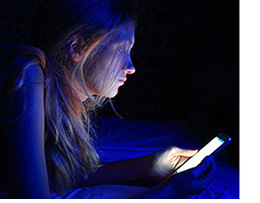
|
Summer is a great time to have Laser Vision Correction/PRK. Here are the top five questions patients ask about PRK:
PRK (photorefractive keratectomy) is a type of eye surgery that utilizes the excimer laser to precisely alter the shape of the cornea by removing a small amount of cells from the outer layer to eliminate or greatly reduce nearsightedness, farsightedness and astigmatism. PRK surgery is extremely effective and can greatly improve vision without the need to cut a corneal flap, which is a necessary part of any LASIK procedure.
CLICK HERE TO READ MORE Does caffeinated tea reduce the chances of glaucoma?
In order to evaluate the association between consumption of coffee, tea or soft drinks and glaucoma, a National Health and Nutrition Examination Survey was performed among a total of 1678 adult participants. The study found no statistically significant association between consumption of these drinks and glaucoma:
Surprisingly however, participants who consumed at least one cup of caffeinated hot tea daily were 74% less likely of having glaucoma compared with those who did not consume hot tea. These findings indicate that the antioxidants found in tea, but not those found in coffee, may be beneficial to eye health. NOTE: Dr. Coleman cautions that further studies are needed to confirm the correlation before doctors recommend hot tea to people at risk of glaucoma. How worrisome is all that blue light?
Many people experience eye discomfort from staring at screens. Most likely this is digital eyestrain. Because most of us blink less when looking at screens, it can cause eye strain and dry eyes. This is the reason why many experts recommend that people try to limit their amount of screen time in the two to three hours before they go to bed. Some devices now have nighttime settings to minimize blue light exposure in the evenings. People are often surprised that even though they most often associate blue light with computers and phones, the largest source of blue light is sunlight. Fluorescent light, compact fluorescent light bulbs and LED lights are also common sources. The sun causes much more blue light exposure that the screens of electronic devices. Experts have long surmised that too much exposure to ultraviolet light from the sun increases the risks of eye diseases, including cataracts, growths on the surface of the eye and skin cancer. However, we know less about blue light because its effects are still being researched. Many studies have suggested that insufficient exposure to sunlight in children could affect the growth and development of their vision. A recent study has suggested that when teens and young adults don’t get enough sun they may have an increased risk of myopia (nearsightedness). Here are two simple tips to treat eyestrain brought on by electronic devices:
Eye tips; first aid for eye scratches Eye accidents such as scratches happen every day and can be caused by activities as simple as housework, holding a small child or playing with a pet. The symptoms of a scratched eye include pain, a feeling that something is stuck in your eye, or tearing and redness. Sometimes the symptoms show up immediately, but in some cases these symptoms may not start until hours after the injury. One kind of scratch is called a corneal abrasion. This is a scratch or scrape on the cornea, which is the clear, round dome covering the eye's iris and pupil. The cornea plays an important role in vision by helping to focus light as it enters the eye. When a corneal abrasion scars the cornea, it can result in blurry vision, sensitivity to light and headaches. If you believe that you have scratched your eye it is always a good idea to see an ophthalmologist at Eye Care Associates. Although most corneal abrasions are minor and will heal on their own in a few days, our ophthalmologists may treat a corneal abrasion with antibiotic eye drops, ointment or use steroid eye drops to reduce inflammation and reduce the chance of scarring. In most cases we can schedule an appointment for a patient who has experienced an eye scratch on a same-day basis. Here are some DO’S and DON’TS for eye scratches: DO’S:
DONT’S:
|



 Dr. Anne Coleman conducted a study which was published in the British Journal of Ophthalmology which explored the link between caffeine intake and glaucoma risk.
Dr. Anne Coleman conducted a study which was published in the British Journal of Ophthalmology which explored the link between caffeine intake and glaucoma risk.  Whether it is a computer, TV, phone or tablet, most people are staring at screens for hours at a time. During this time they are exposed to blue light from these devices. Luckily there is no scientific evidence that blue light from digital devices causes damage to your eye.
Whether it is a computer, TV, phone or tablet, most people are staring at screens for hours at a time. During this time they are exposed to blue light from these devices. Luckily there is no scientific evidence that blue light from digital devices causes damage to your eye.